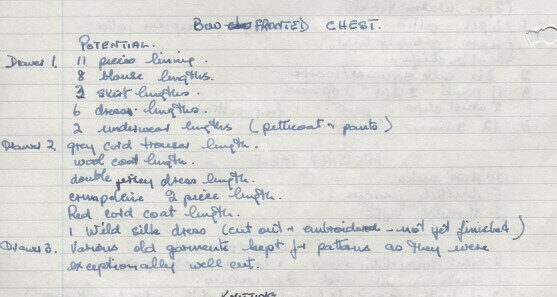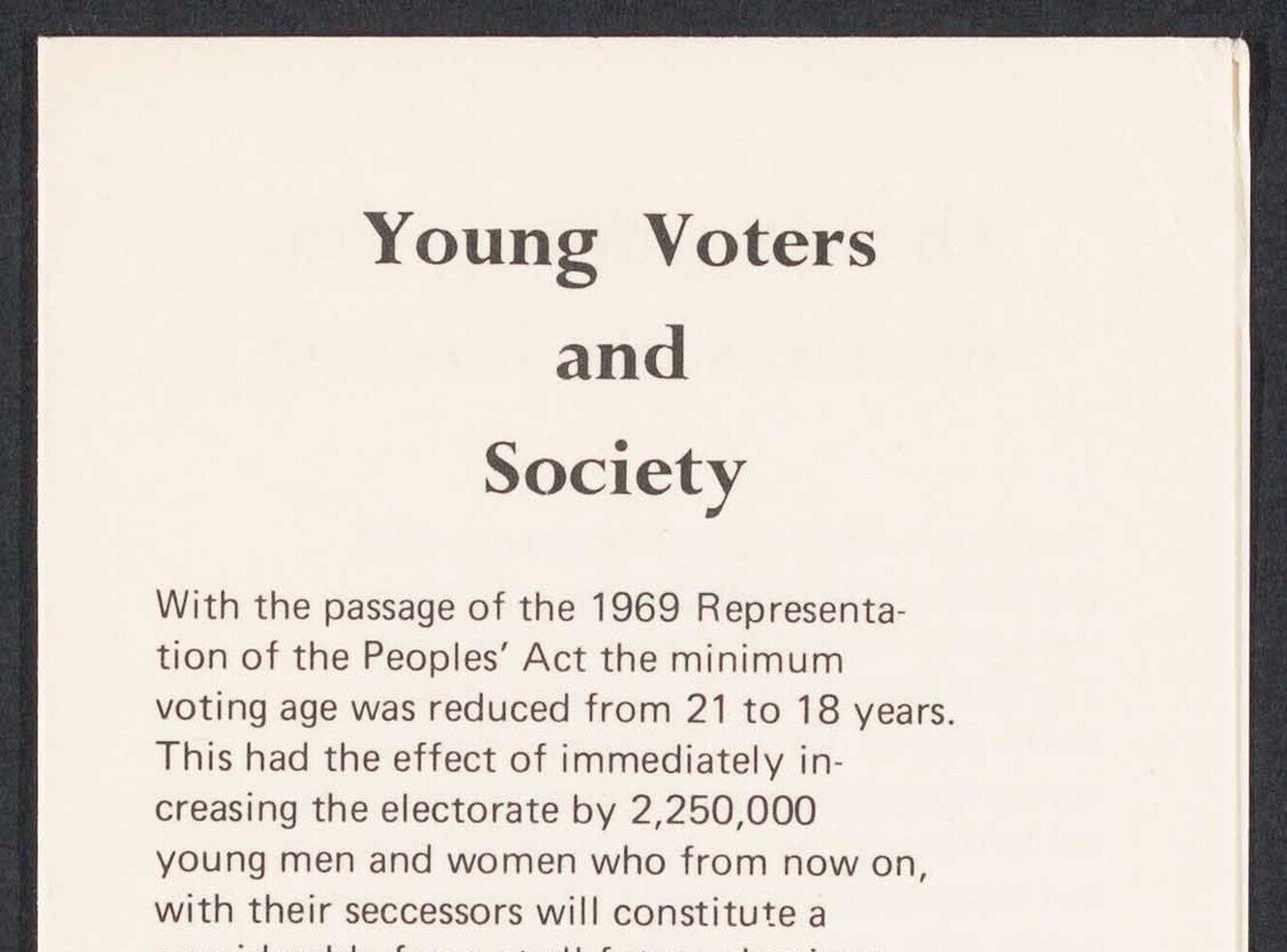“One felt like a bouquet of flowers!” Homemade fashions in Mass Observation Project
In the spring of 1988, I was newly 5 and was about to undertake the most exciting thing in my young life – to be a real-life bridesmaid.
There would be white ballet slippers, a crown of (fake) flowers, ringlets to match the bride, and, best of all, a Laura Ashley dress covered in watercolour hues. (Let’s take a moment, please, to acknowledge my Aunt’s taste in choosing a muted, cotton dress when all about her were opting for shiny pink satin.)
I loved everything about it, and I don’t think I’ve stopped getting excited about beautiful textiles since. This is why the blog this week is revisiting the 1988 Spring Directive in Mass Observation Project.
The 1988 Spring Directive asks about clothing and includes a specific question about “What clothes do you make (don’t forget knitting) for yourself or others?”. As a sewing and knitting enthusiast, I was keen to see how these were represented. I found evidence in a few of the respondents I looked at: P425 mentions that the fancy wool used in her cardigan was purchased in France; P1583 references a handknitted mohair sweater which cost £50 (that’s £140 allowing for inflation); and V1601 lists the garments she’s sewn and that she now fancies turning her hand to knitwear design.

From observer V1601's response to the spring 1988 directive © Mass Observation Archive Trustees. Further reproduction is prohibited without permission.

From observer V1601's response to the spring 1988 directive © Mass Observation Archive Trustees. Further reproduction is prohibited without permission.
V1601’s response contains many interesting elements for exploring homemade garments in 1980s Britain. She tells us about her sewing career from Wartime “Make do and Mend”, through navigating unflattering fashions to her current fabric collection and pattern supply. As she discusses her interest in knitwear design (specifically something to wear to RSPCA meetings) she cites inspiration from Kaffe Fassett.
Fassett is a key figure in 1980s textile design and has a strong association with the Rowan knitting brand, which is based in Yorkshire. In 1988 he became the first living textile artist to have a one-man show at the V&A.

From observer V1601's response to the spring 1988 directive © Mass Observation Archive Trustees. Further reproduction is prohibited without permission.
V1601 talks about using Lancashire cloth in her sewing and then includes a catalogue from Croft Mill, which is based in Lancashire. The Croft Catalogue is a revelation and a charming document in its own right. Croft Mill is still going strong and trading online, and bills itself as the original mail-order fabric supplier. However, the current website does not have quite the humour or conversational tone to be found in the catalogue:

Croft Mill Catalogue from observer V1601's response to the spring 1988 directive © Mass Observation Archive Trustees. Further reproduction is prohibited without permission.

Croft Mill Catalogue from observer V1601's response to the spring 1988 directive © Mass Observation Archive Trustees. Further reproduction is prohibited without permission.
And so I leave you with a few observations from V1601. A raincoat sewed from clear plastic worn over a summer dress can leave one feeling “like a bouquet of flowers”. That the New Look was “deadly for reaching the top deck of a bus and in the office had a nasty habit of sweeping up piles of invoices if you were in a hurry”.
And “the mini skirt is anything but elegant as the knees, on the whole, are not the most attractive part of one’s anatomy”. At least on my own part, I couldn’t agree more.
About the collection
Mass Observation Project is out now.
Recent posts

The blog highlights American Committee on Africa, module II's rich documentation of anti-apartheid activism, focusing on the National Peace Accord, global solidarity, and student-led divestment campaigns. It explores the pivotal role of universities, protests, and public education in pressuring institutions to divest from apartheid, shaping global attitudes toward social justice and reform.

This blog examines how primary sources can be used to trace the impact of young voices on society, particularly during pivotal voting reforms in the UK and the US. Explore materials that reveal insights into youth activism, intergenerational gaps, and societal perceptions, highlighting their interdisciplinary value for studying youth culture, activism, and girlhood across history.
